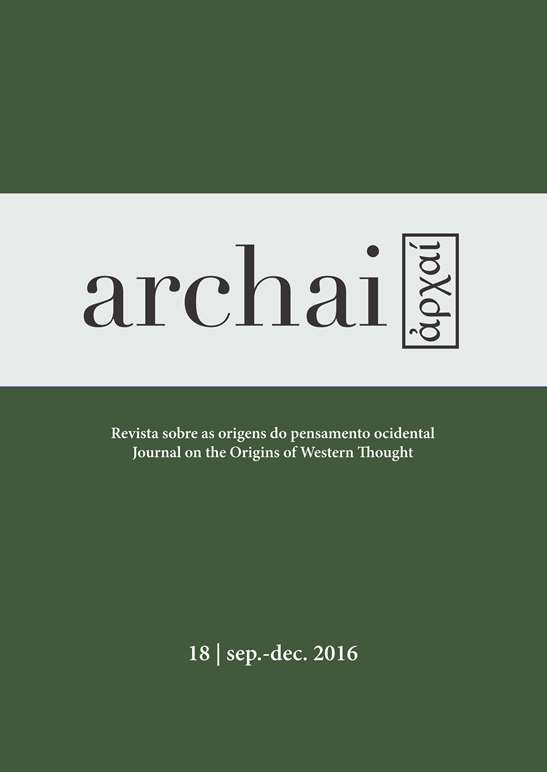Proagogeia, mastropeia, promnestria:
mayéutica y paideia erótica en los diálogos Socráticos
DOI:
https://doi.org/10.14195/1984-249X_18_4Keywords:
Articulo, Antiguidad, Literatura Socratica antiguaAbstract
El objecto de la investigación es una serie de
conceptos recurrentes en la literatura socrática antigua ”“
Ï€Ïοαγωγεία, μαστÏοπεία y Ï€ÏομνήστÏια ”“ y su relación con
algunos aspectos fundamentales de la filosofía socrática, comoá¼”Ïως, παιδεία y mayéutica. Los textos de referencia principales serán: la Aspasia de Esquines, el Simposio de Jenofonte y el Teeteto de Platón, el análisis de los cuales permite conectar dichos aspectos de la enseñanza socrática con la actividad educativa de Aspasia. El punto inicial del análisis consiste en la descripción de la actividad pedagógica de Aspasia hecha por Esquines en el diálogo homónimo, particularmente en el testimonio de Cicerón (De inventione 1.31, 51”‘53). Otras referencias a la Aspasia de Esquines en el Oeconomicus (3.14) y en las Memorables (2.6, 36) de Jenofonte ”“ donde Sócrates mismo cita un dicho de Aspasia sobre “las buenas alcahuetas” (Ï„á½°Ï‚ ἀγαθὰς Ï€ÏομνηστÏίδας) ”“ demuestran que el problema de la educación fue tratado a profundidad en dicho diálogo. Es posible aclarar el significado de estas referencias leyendo los dos testimonios en paralelo con el Simposio de Jenofonte (8.37 sgg.) y el Teeteto de Platón (149a sgg.), donde la Ï€Ïοαγωγεία es presentada como una actividad de pésima fama, y ”“ con todo ”“ asociada a la actividad socrática. Finalmente, es posible concluir que Aspasia atribuyó a la Ï€ÏομνήστÏια el mismo noble significado que los artes de la μαστÏοπεία y Ï€Ïοαγωγεία tienen para Sócrates en el Simposio y en el Teeteto.
Downloads
Downloads
Published
How to Cite
Issue
Section
License
Given the public access policy of the journal, the use of the published texts is free, with the obligation of recognizing the original authorship and the first publication in this journal. The authors of the published contributions are entirely and exclusively responsible for their contents.
1. The authors authorize the publication of the article in this journal.
2. The authors guarantee that the contribution is original, and take full responsibility for its content in case of impugnation by third parties.
3. The authors guarantee that the contribution is not under evaluation in another journal.
4. The authors keep the copyright and convey to the journal the right of first publication, the work being licensed under a Creative Commons Attribution License-BY.
5. The authors are allowed and stimulated to publicize and distribute their work on-line after the publication in the journal.
6. The authors of the approved works authorize the journal to distribute their content, after publication, for reproduction in content indexes, virtual libraries and similars.
7. The editors reserve the right to make adjustments to the text and to adequate the article to the editorial rules of the journal.



